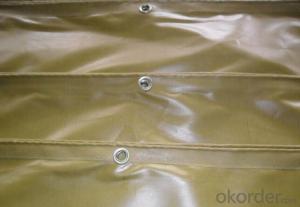Plastic water pipe fittings have become a popular choice in the world of plumbing due to their versatility, ease of installation, and affordability. These fittings are essential for connecting various sections of water pipes, ensuring a seamless flow of water throughout your home or commercial space. In this article, we’ll explore the world of essential water pipe fittings made of plastic, diving into their benefits, types, and installation tips. So, let’s get started!
The Appeal of Plastic Fittings
First and foremost, plastic water pipe fittings are incredibly cost-effective. They are much cheaper than their metal counterparts, making them an attractive option for those on a budget. Additionally, plastic fittings are lightweight, which makes them easier to handle and install. This can save you time and effort during the plumbing process.
Another advantage of plastic fittings is their resistance to corrosion. Unlike metal pipes, which can rust and degrade over time, plastic fittings maintain their integrity, ensuring a long-lasting and reliable connection. This durability is particularly beneficial in areas with harsh weather conditions or corrosive water sources.
Types of Plastic Fittings
There are several types of plastic water pipe fittings available, each serving a specific purpose. Let’s take a closer look at some of the most common types:
– Elbows: These fittings are used to make 90-degree turns in a pipe system. They come in various sizes to accommodate different pipe diameters.
– Tees: T-junctions, or tees, are used to connect three sections of pipe, allowing water to flow into or out of the system at a right angle.
– Couplings: Couplings are used to join two sections of pipe together. They are essential for extending the length of a pipe run or repairing damaged sections.
– Unions: These fittings allow for easy disconnection and reconnection of pipes. They are particularly useful in situations where pipes need to be frequently removed or adjusted.
– Reducers: As the name suggests, reducers are used to decrease the diameter of a pipe. They are useful when transitioning from a larger to a smaller pipe size.
– Caps: Caps are used to seal the end of a pipe, preventing water from flowing out or debris from entering the system.
Installation Made Easy
Installing plastic water pipe fittings is generally a straightforward process. Here are some steps to follow for a successful installation:
1. Measure and Mark: Before cutting the pipe, measure and mark the exact location where the fitting will be installed.
2. Cut the Pipe: Use a pipe cutter or a fine-toothed saw to make a clean, straight cut. Be sure to follow safety precautions when using cutting tools.
3. Clean the Pipe Ends: Remove any burrs or debris from the cut pipe ends to ensure a smooth connection.
4. Apply Primer and Cement: Apply a plastic pipe primer to the pipe and fitting surfaces, followed by a plastic pipe cement. This will create a strong bond between the components.
5. Assemble the Fittings: Carefully slide the fitting onto the pipe, making sure it is properly aligned. Hold the fitting in place for a few seconds to allow the cement to set.
6. Check for Leaks: Once the cement has fully cured, turn on the water supply and check for any leaks. If you find any, tighten the connections as needed.
Maintenance and Troubleshooting
Proper maintenance of your plastic water pipe fittings is essential to ensure their longevity and performance. Here are a few tips to keep your fittings in top shape:
– Regularly inspect your fittings for signs of wear or damage.
– Clean the threads of the fittings to prevent debris buildup.
– Lubricate the threads with a pipe thread sealant before tightening to reduce the risk of leaks.
– If you encounter a leak, first try tightening the connection. If that doesn’t work, you may need to replace the fitting.
The Future of Plastic Fittings
As technology advances, we can expect to see even more improvements in the design and functionality of plastic water pipe fittings. Innovations such as self-healing materials and smart sensors could revolutionize the way we connect and monitor our plumbing systems. The future looks bright for these versatile and reliable fittings.
In conclusion, essential water pipe fittings made of plastic offer a practical, cost-effective, and durable solution for your plumbing needs. With a wide range of types available and a relatively simple installation process, these fittings are an excellent choice for both residential and commercial applications. So, the next time you find yourself in need of a water pipe fitting, consider the benefits of plastic and give it a try!

